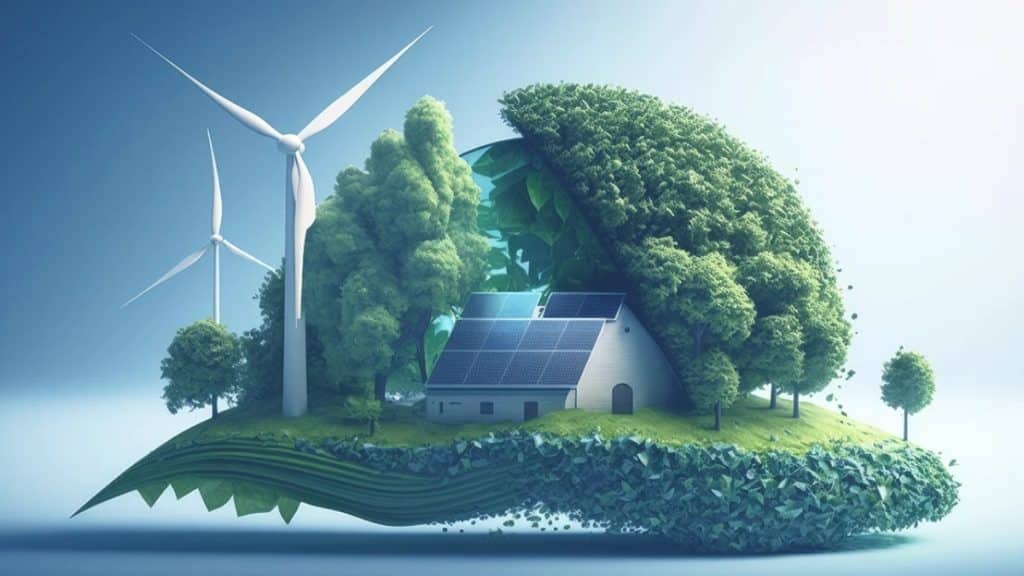Sustainable investing has shifted from a fringe market to a mainstream trend, as more investors recognize how important it is to align their financial goals with positive environmental and social impacts. From supporting renewable energy initiatives to backing innovation in sustainable agriculture, today’s investors have more options than ever for making a difference while earning a return. If you’re interested in building a greener portfolio, here are the best ways to invest sustainably.
Innovation in Agriculture Drives Sustainable Farming
One of the most impactful ways to invest in a sustainable future is through innovation in agriculture. As the world’s population gets even bigger, the demand for food increases, making it crucial to find farming methods that are efficient and environmentally friendly. The shift toward sustainable farming includes everything from organic fertilizers to precision agriculture, which uses data and technology to optimize crop yields while reducing the environmental impact.
Investing in different companies or projects that focus on sustainable farming practices can offer a way to support a critical sector while benefiting from its growth. Specialty fertilizers, for example, are being developed to reduce the need for chemicals, helping to maintain soil health and decrease water pollution. Innovations like these can make farming more sustainable and profitable, offering a win-win for both farmers and investors. The push for sustainable agriculture also extends to urban farming initiatives and vertical farms, which aim to produce fresh food closer to urban centers, reducing the carbon footprint associated with transportation.
Tokenization Can Make Investing in Renewable Energy More Accessible
One of the most exciting developments in the world of sustainable investing is the rise of RWA tokenization, which allows investors to own fractional shares of real-world assets. In the renewable energy sector, this means that projects like wind farms, solar installations, and even hydroelectric plants can be tokenized, making it possible for more people to participate in funding these initiatives.
Traditionally, investing in large-scale renewable energy projects required significant capital and access to specialized funds. Tokenization changes this by breaking down these investments into smaller, more accessible pieces, allowing investors to buy a share of a wind farm in the same way they might purchase a stock. This democratizes the investment process, enabling more people to support the transition to clean energy.
By offering a new way to back renewable energy, tokenization not only opens up new opportunities for individual investors but also accelerates the shift toward a low-carbon economy. For those looking to make a positive impact while diversifying their portfolios, tokenized energy projects offer a promising path forward.
Investing in Green Bonds
Green bonds have emerged as one of the most popular tools for financing environmental projects, offering investors a way to support initiatives that address climate change. These bonds are similar to what you may know about traditional bonds but come with a commitment that the funds will be used exclusively for projects that are environmentally friendly, such as renewable energy, clean water infrastructure, or reforestation.
For investors, green bonds provide a way to earn steady returns while supporting projects that make a positive difference. The structure of green bonds is typically designed to be transparent, with issuers required to report on how the funds are being used and the environmental impact of their projects. This allows investors to feel confident that their money is being put to work in a way that aligns with their values.
Impact Investing to Support Social and Environmental Goals
Impact investing is all about putting money into projects and companies that aim to generate positive social or environmental outcomes alongside financial returns. This approach goes beyond simply avoiding harmful industries; it actively seeks out investments that can make a meaningful difference in key areas like renewable energy, affordable housing, and clean technology.
For those looking to support social causes, impact investing offers a way to direct capital toward initiatives that address pressing global challenges. This could mean investing in companies that provide clean drinking water to underserved communities or backing projects that bring renewable energy to remote areas. These investments are often focused on sectors that align with the United Nations’ Sustainable Development Goals, offering a clear framework for measuring impact.
Investors Can Support Sustainable Infrastructure Projects
As cities and countries around the world aim to meet climate goals, there’s a growing demand for investment in sustainable infrastructure. This includes projects like energy-efficient buildings, clean transportation systems, and smart grids that support the integration of renewable energy into existing networks. For investors, sustainable infrastructure offers a way to participate in long-term projects that not only promise steady returns but also help build a greener future.
Investing in sustainable infrastructure means supporting initiatives that reduce carbon emissions and help communities. For example, smart city projects aim to use data and technology to optimize energy use and reduce waste, making urban living more efficient and less harmful to the environment. Public-private partnerships in this space often create opportunities for investors to fund large-scale projects while benefiting from government support and incentives.
